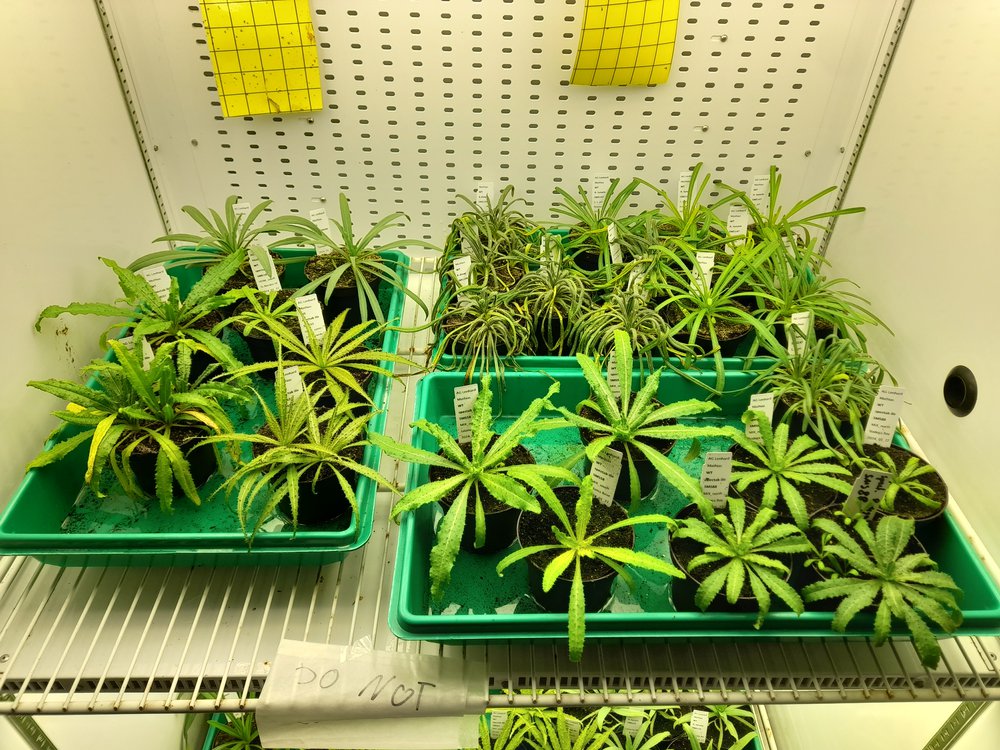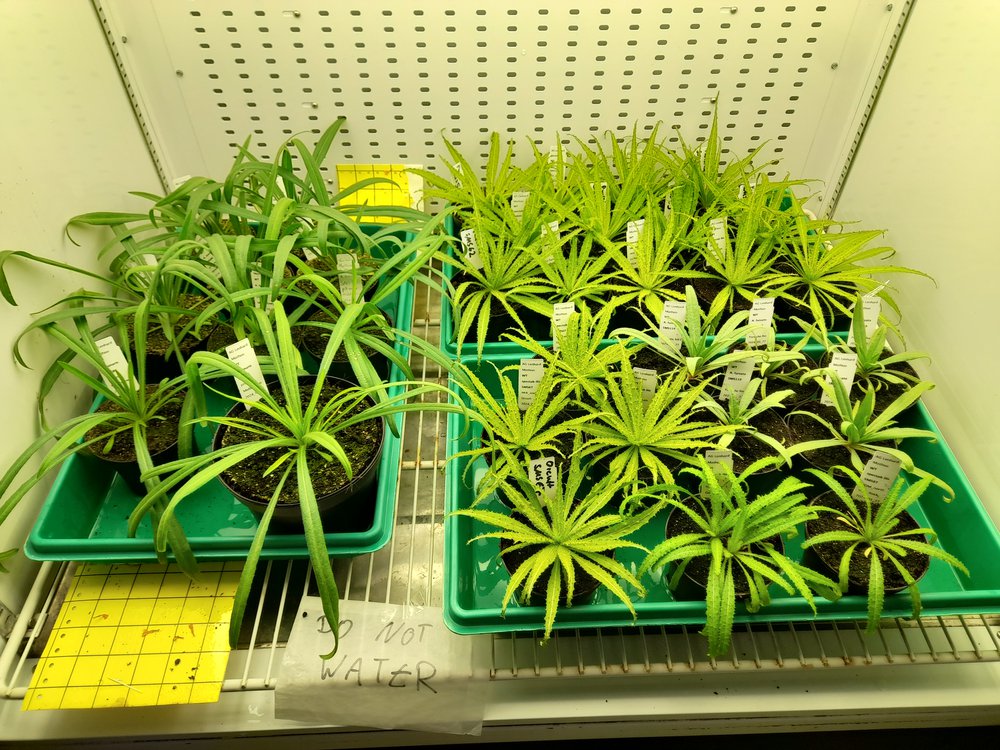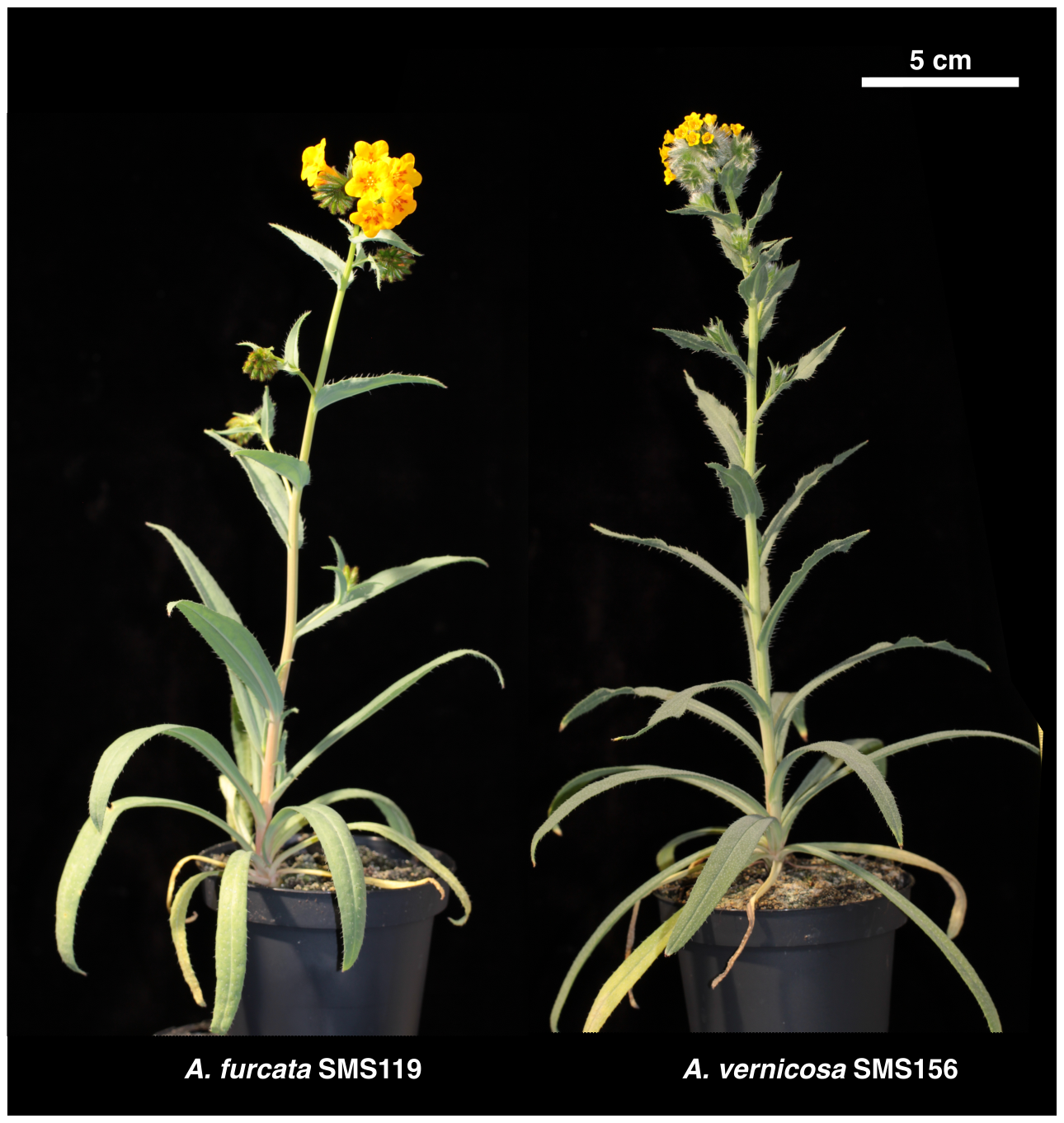I am raising lots of different Amsinckia accessions at Uni Potsdam for cytogenetic tests
 Oops some of these young plants of A. douglasiana got a bit too dry there and nearly wilted, but amazingly fully recovered within a day. In general, Amsinckia seem to hate standing water at their roots and quickly rot/suffer, so its better to keep them on the dry side.
Oops some of these young plants of A. douglasiana got a bit too dry there and nearly wilted, but amazingly fully recovered within a day. In general, Amsinckia seem to hate standing water at their roots and quickly rot/suffer, so its better to keep them on the dry side.

Now a few weeks later, the plants are in their prime and generally look the best when they are just starting to flower.
This is the chance to get some beauty-shots in the photo studio:

Among the most beautiful plants are Amsinckia furcata and its sister lineage Amsinckia vernicosa. Here in the side-by-side comparison, one can clearly see the remarkable difference in flower size between the highly outcrossing and heterostylous A. furcata on the left, and the highly selfing, homostylous A. vernicosa on the right. Apart from the flowers, the obvious phenotypic differences are minor: both species have thick glaucous epicuticular wax which helps them to survive well into the hot and dry season from their winter-growing life history in desert-like regions of western central California. The hypothesis to test is that heterostyly is ancestral, but the vernicosa lineage lost it and instead evolved homostylous, tiny flowers for efficient self-pollination and reproductive assurance.